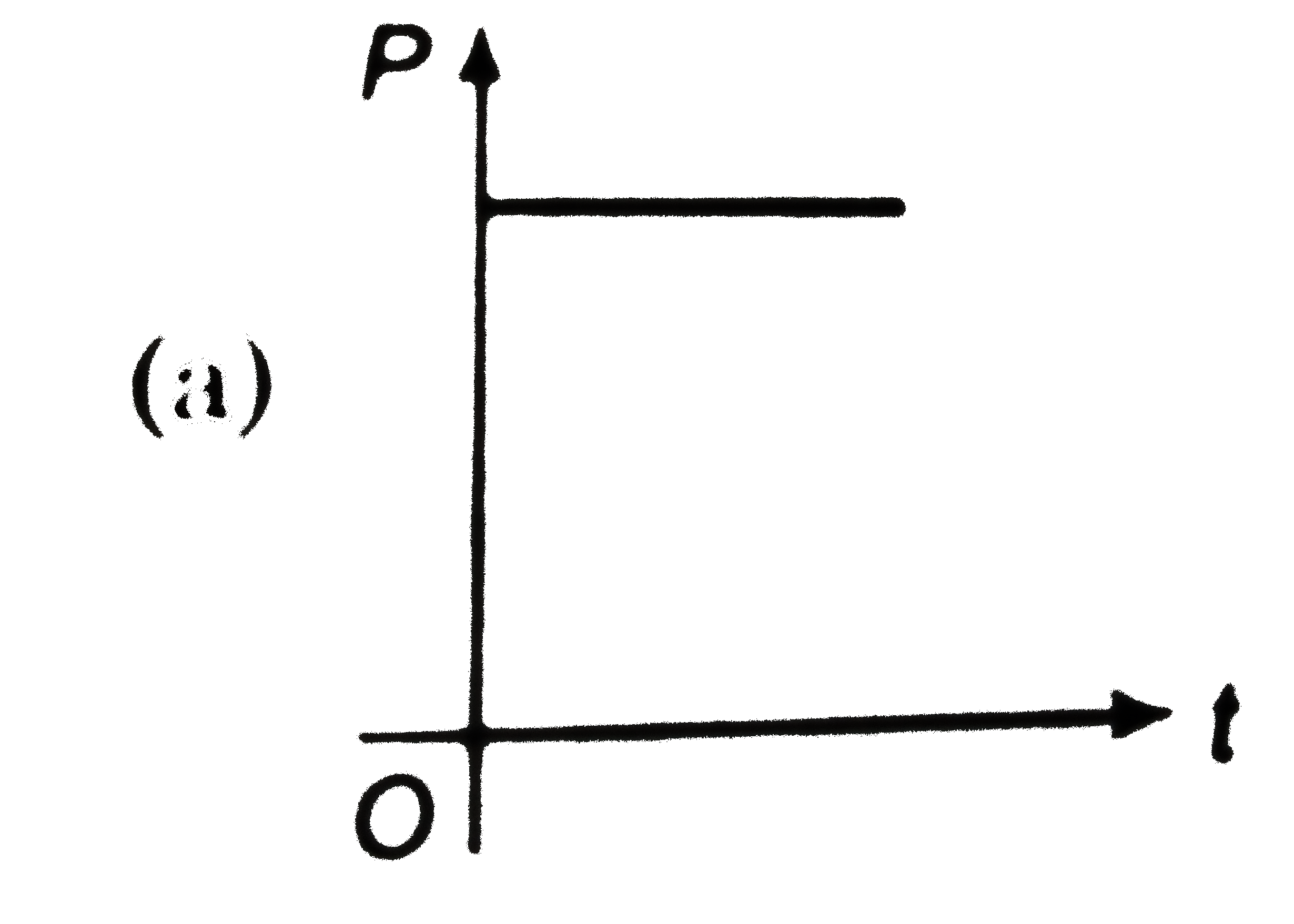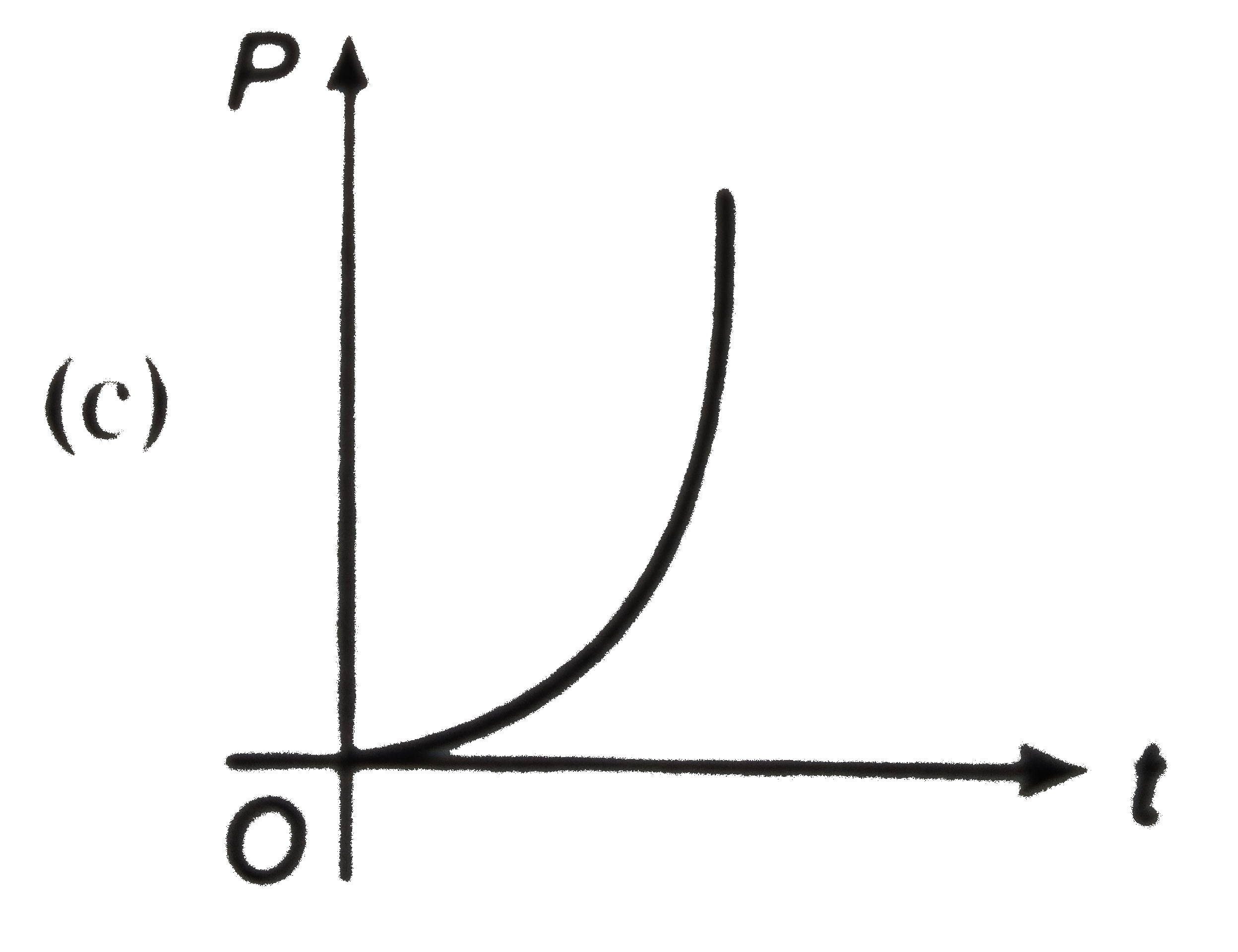Under the action of a constant force, A particle is experiencing a constant acceleration. The power is
Positive constant
Negative constant
Increasing uniformly with time
Decreasing uniformly with time
The correct Answer is:C
To solve the problem, we need to analyze the relationship between force, acceleration, velocity, and power.
1. Understand the Given Information:
- A particle is under the action of a constant force.
- This constant force results in a constant acceleration.
2. Recall the Relationship Between Force and Acceleration:
- According to Newton's second law, F=ma, where F is the force, m is the mass of the particle, and a is the acceleration.
- Since the force is constant, the acceleration a is also constant.
3. Determine the Velocity:
- The velocity of the particle changes over time due to the constant acceleration.
- The relationship is given by:
v=u+at
where v is the final velocity, u is the initial velocity, a is the constant acceleration, and t is the time.
4. Calculate Power:
- Power (P) is defined as the rate of doing work or the rate of energy transfer. It can also be expressed as:
P=F⋅v
- Since the force F is constant and the velocity v is increasing with time (because of constant acceleration), we can express power as:
P=F⋅(u+at)
- As time t increases, the velocity v increases, leading to an increase in power.
5. Conclusion:
- Since the power is directly proportional to the increasing velocity (which is a function of time), we conclude that the power increases uniformly with time.
Final Answer:
The power is increasing uniformly with time.
- A particle is under the action of a constant force.
- This constant force results in a constant acceleration.
- According to Newton's second law, F=ma, where F is the force, m is the mass of the particle, and a is the acceleration.
- Since the force is constant, the acceleration a is also constant.
- The velocity of the particle changes over time due to the constant acceleration.
- The relationship is given by:
v=u+at
where v is the final velocity, u is the initial velocity, a is the constant acceleration, and t is the time.
- Power (P) is defined as the rate of doing work or the rate of energy transfer. It can also be expressed as:
P=F⋅v
- Since the force F is constant and the velocity v is increasing with time (because of constant acceleration), we can express power as:
P=F⋅(u+at)
- As time t increases, the velocity v increases, leading to an increase in power.
- Since the power is directly proportional to the increasing velocity (which is a function of time), we conclude that the power increases uniformly with time.
The power is increasing uniformly with time.
Topper's Solved these Questions
Similar Questions
If a constant force acts on a particle, its acceleration will
View SolutionA car of mass M is accelerating on a level smooth road under the action of a single force F acting along the direction of motion. The power delivered to the car is constant and equal to p. If the velocity of the car at an instant is v, then after travelling a distance of 7Mv33p the velocity become kv where k is__________.
View Solution
Knowledge Check
A particle is moving horizontally with constant acceleration.
AThe sum of the horizontal components of the forces acting on the particle is not zero.BThe sum of the vertical component of the forces acting on the particle is not zero.CThe forces acting on the particle are not in equilibrium.DAll of the above.A particle of mass m moves from rest under the action of a constant force F which acts for two seconds. The maximum power attained is
A2FmBF2mC2FmD2F2mA body moves under the action of a constant force along a straight line. The instantaneous power developed by this force with time t is correctly represented by.
A B
B C
C D
D
When a constant force is applied to a body moving with constant acceleration, is the power, of the force constant ? If not, how would force have to very with speed for the power to be constant ?
View SolutionAn object of mass m, initially at rest under the action of a constant force F attains a velocity v in time t. Then, the average power supplied to mass is
View SolutionA particle start moving from rest state along a straight line under the action of a constant force and travel distance x in first 5 seconds. The distance travelled by it in next five seconds will be
View SolutionA particle starts its motion from rest under the action of a constant force. If the distance covered in first 10s is s1 and the covered in the first 20s is s2, then.
View SolutionThe displacement x of a particle moving in one dismension under the action of a constant force is frlated to time t by the equation t√x+3, where x is in merers and t is in seconds, Find the displacemect of the particle when its velocity is zero.
View Solution
